Honing Collaboration Skills Through Project-Based Learning
Our 1st grade teacher, Maria (Mari) Isabelle Morillo, is completely dedicated to her students and runs an amazing classroom. However, when her learners returned to school after a year in remote learning, she struggled to keep them engaged and found they had difficulties working together.
Mari was looking for ways to motivate her students and help them develop their collaboration skills. Because project based learning (PBL) focuses on real-life problems that are relevant to students and gives them control over their learning, she felt it might be a solution. Little did she know, Mari would also have to stretch herself, by giving up control of her classroom, reaching out for help, and learning to collaborate more as well.
How the project evolved
After returning from remote learning, Mari noticed that her learners were struggling with social issues. Students at all ages will naturally go through some social difficulties — friendships might be difficult or there can be pushing and fighting — but after the pandemic, it was worse than usual and didn’t seem to be improving. Laura, our elementary psychologist, suggested helping students identify their own feelings so they could become more empathetic. Mari also referred to our conflict strategies with her students on a daily basis. But, still, the social problems were not diminishing.
Mari decided this issue might be a good one to work on through PBL. She began by including books in her class’ reading workshop that were about friendship and solving conflicts. Then, one day in a community circle, she asked the students to identify the biggest social problems they were facing. They came up with a number of complaints, mostly focused on blaming each other. So Mari changed tactics and asked them to imagine solutions. She suggested, “Why don’t we make a project about this? What can we do?”
The students came up with all kinds of ideas, including writing a book about how to be a good friend, making a music video, and creating a movie. Not wanting to bite off more than she could chew, Mari asked them to choose just one of their ideas. But they insisted they wanted to write a book and make a movie. Mari reflects, “I knew I was in trouble. Six-year-olds need a lot of support, so how was I going to help them create two final products?”
Setting learning goals
From the get-go Mari knew that her major learning goal was to empower students to use problem-solving strategies on their own. But she focused on a number of other learning targets as well:
- The writing process: Mari wanted to support her students in strengthening their writing and publishing skills.
- Movie production : students would need to practice a variety of skills in order to write scripts, rehearse and act in their mini-movies.
- Collaboration: one of Mari’s overarching goals was to help students learn to work effectively in small groups.
- Communication: Mari felt that improved communication skills would help them learn to solve their problems on their own.
Developing student collaboration
Because of time constraints, Mari decided that students would create their movies and write their books simultaneously. To encourage students to improve both their independent working and collaboration skills, Mari decided that students should each write chapters of the book independently, then collaborate to create the cover of the book together. Mari focused on helping them improve their listening skills in order to make sure all students were able to share their ideas for the cover (a difficult skill even for adults!).
For the movie section of the project, they would work in groups of about 3 students, led by their co-teacher, Nadja. As part of the project, Mari grouped the students randomly so they’d be working with children who were not necessarily their close friends. She wanted them to practice the strategies they were writing about in their books and movies: how to communicate their ideas, how to disagree politely, how to listen to each other, and how to be gentle leaders (rather than bossy leaders). Students had to collaborate in writing scripts, rehearsing their lines, and acting out their parts. Nadja pushed the quieter students to also share their ideas for the scripts.
Inviting in community collaboration
It wasn’t just the students who learned to collaborate through this process… Mari did too. As a self-proclaimed perfectionist, she says she usually isn’t comfortable asking others to help. She prefers to do things herself to make sure they’re done to her standards. However, she knew that she couldn’t conference with her students on their books and also help them film their movies. Not only did she not have enough time in her day, but she realized that making videos was not her strength and she would need help.
Knowing she would need help filming the movies and editing them, Mari reached out to Lorena, our director of curriculum and instruction, for help. Lorena loves to empower our students, so she asked several of them if they’d be interested in helping create the 1st grade movies. She found three students who were excited about the project, and when the first graders were ready, they came down to film them.
The filming was incredibly fun to watch. The high school students prompted the little ones to speak louder, where to walk, and how to make gestures. Sometimes a brief two- or three-minute video took over an hour to film. But the high school students were endlessly patient and kept a good sense of humor as they worked with the groups. The first graders loved the opportunity to work with the “big kids” who they usually admire from afar. It was a wonderful learning experience for all of us. Not only was Mari grateful for the help, but she realized that the final videos were of much higher quality than anything she could have produced herself.
Sharing their work
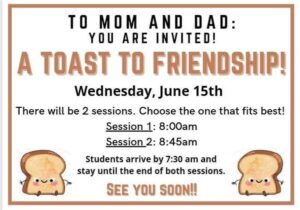 In PBL, it’s important that students have an opportunity to share their work with an audience beyond their teacher and classmates. Mari sent an invitation out to parents called, “A Toast to Friendship.” When parents came in, Mari explained the process for the project, then they all watched the movies together.
In PBL, it’s important that students have an opportunity to share their work with an audience beyond their teacher and classmates. Mari sent an invitation out to parents called, “A Toast to Friendship.” When parents came in, Mari explained the process for the project, then they all watched the movies together.
The movies weren’t completely finished (some still needed subtitles) but Mari said, “It didn’t matter! I realized it didn’t have to be perfect. The kids were adorable, the parents loved it, and we knew we’d have the finished products ready to share with them in a few days.”
After the movie, each student received a copy of the book and the parents sat down for independent reading time with their children. Her students surpassed all of Mari’s expectations: the book turned out to be a work of art.
Finally, as the students shared a snack with their parents of toast with cream cheese and jam, Mari told her students that next year she’ll be using the book and videos with her incoming first graders as they work on friendship and problem-solving skills. Her students couldn’t feel more proud!
Mari’s reflection
When looking back on the PBL project, Mari smiles and says, “Basically this project taught me that anything’s possible. I was very apprehensive. I knew I couldn’t possibly help students create videos and publish a book along with writing report cards and teaching. This project not only taught my students to collaborate, but it taught me as well. I had to learn to delegate, to let go of my perfectionism and to trust others. In the end, I felt so proud of the way it all worked out. It was like a dream. I was sure I wouldn’t be able to do it and then it turned out beyond what I had envisioned or what I could have hoped for.”
She loved the way the project helped her students work on the very skills they were writing about. Teaching others is one of the best ways to learn and creating how-to books and documentaries about friendship helped her students internalize those lessons. They truly learned to collaborate, to communicate, and to independently solve some of their own problems.

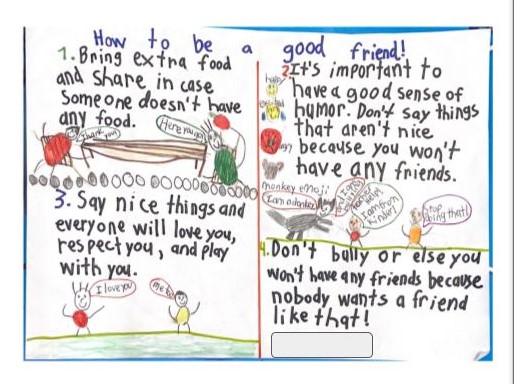
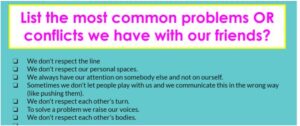
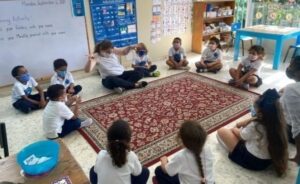
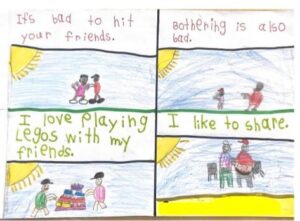
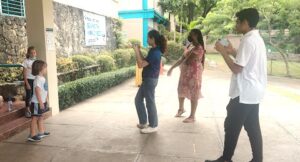
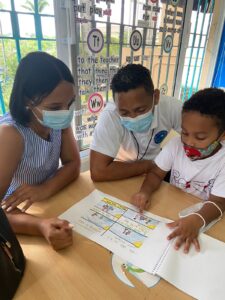
Leave a comment